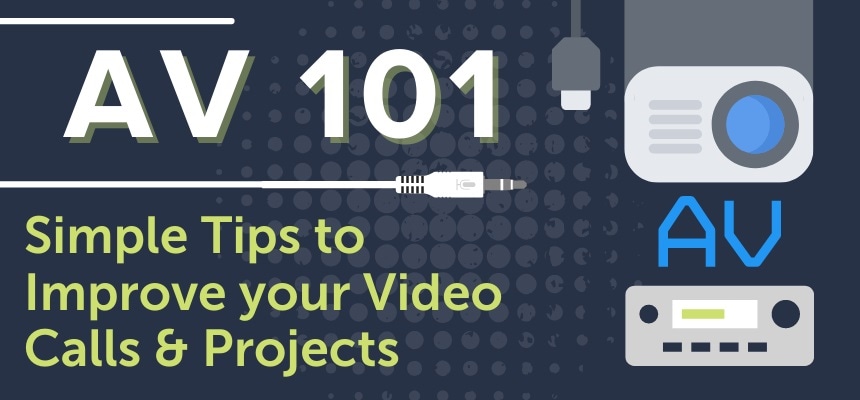
For obvious reasons, over the last two years, video calls and virtual meetings have become the new normal. With more and more people now permanently working from home, chances are you have numerous projects that require you to livestream and record yourself.
And with those projects come a new set of challenges: poor video and audio quality, internet drops, hearing your voice's echo while you speak... who hasn't experienced at least one of these at some point over the last year?

Here is a simple checklist that will help you achieve the best possible quality on your video projects without spending thousands on equipment:
Audio
-
Use headphones, even if it's just a simple in-ear set that you got with your mobile phone... and encourage your colleagues to use them as well. This will prevent your speakers from feeding back into your mic, which causes other people that might be in the call to hear themselves back when they speak.
-
Avoid air currents feeding into your mic. Fans, wind currents and even sighs can impact the sound quality. If you are using a different microphone than the one built in your laptop, then getting a microphone muffler or windshield is a great idea.
-
Use a different microphone when possible. If you have access to a hands-free headset with a built-in microphone, it's probably better than your laptop's built-in one. Use and test what you have for the best results.
-
Be as close as possible to your microphone for a clearer sound.
Video
-
Use a different camera than your laptop's standard one. As with microphones, it is likely that any other camera (including your phone's) will be better than any laptop's built-in camera. If you have a DSLR camera, or can connect your phone to the laptop, do so - you will notice the difference.
-
Think about the lighting. Position your camera between you and a good source of light. Natural light or bright lamps will do the trick. This way you will avoid odd shadows and achieve the best results.
Other Tips
-
Be mindful of noise sources. You can't control when your puppy will bark or when your noisy neighbour will decide to carry out some home renovations upstairs. However, moving your set to the quietest area of the house can make a huge difference to minimise disruption.
-
Write down bullet points for your presentations and expand from there. This will allow you to hit your key points without losing the flow of natural conversation.
Download the PDF Guide
We all understand the struggles of working from home, but hopefully these little tips will help you achieve the best possible video quality for both your meetings and your video projects. If you want more advice and tips for your audio-visual endeavours, you can have a look at our Podcasting podcast, full of help and ideas from our video specialist, Will Soutter.
Thought Leader Testimonial Videos
Training & Ease of Use Videos